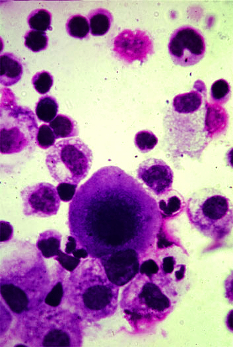Global cancer burden increasing
 Men in the Australia/NZ region have a 1 in 2 chance of getting some sort of cancer in their lifetimes, according to the WHO.
Men in the Australia/NZ region have a 1 in 2 chance of getting some sort of cancer in their lifetimes, according to the WHO.
The World Health Organization (WHO) has published new estimates of incidence and mortality in 185 countries for 36 types of cancer and for all cancer sites combined.
The global cancer burden is estimated to have risen to 18.1 million new cases and 9.6 million deaths in 2018.
One in 5 men and one in 6 women worldwide develop cancer during their lifetime, and one in 8 men and one in 11 women die from the disease.
Worldwide, the total number of people who are alive within 5 years of a cancer diagnosis, called the 5-year prevalence, is estimated to be 43.8 million.
The increasing cancer burden is due to several factors, including population growth and ageing as well as the changing prevalence of certain causes of cancer linked to social and economic development.
This is particularly true in rapidly growing economies, where a shift is observed from cancers related to poverty and infections to cancers associated with lifestyles more typical of industrialized countries.
Effective prevention efforts may explain the observed decrease in incidence rates for some cancers, such as lung cancer (such as for men in Northern Europe and North America) and cervical cancer (in most regions apart from Sub-Saharan Africa, for example).
However, the new data show that most countries are still faced with an increase in the absolute number of cases being diagnosed and requiring treatment and care.
Global patterns show that for men and women combined, nearly half of the new cases and more than half of the cancer deaths worldwide in 2018 are estimated to occur in Asia, in part because the region has nearly 60 per cent of the global population.
Europe accounts for 23.4 per cent of the global cancer cases and 20.3 per cent of the cancer deaths, although it has only 9 per cent of the global population.
The Americas have 13.3 per cent of the global population and account for 21 per cent of incidence and 14.4 per cent of mortality worldwide. In contrast to other world regions, the proportions of cancer deaths in Asia and in Africa (57.3 per cent and 7.3 per cent, respectively) are higher than the proportions of incident cases (48.4 per cent and 5.8 per cent, respectively), because these regions have a higher frequency of certain cancer types associated with poorer prognosis and higher mortality rates, in addition to limited access to timely diagnosis and treatment in many countries.







 Print
Print